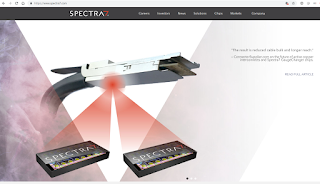Indiana University is collaborating with Ciena, Internet2, and ESnet to power Monon400, a 400 Gbps network ever built for research and education.
Monon400 has a current capacity of 1.2 terabits-per-second with a maximum capacity of 25.6 terabits-per-second, enabling high-speed sharing of massive amounts of data created by modern digital instruments like gene sequencers, powerful microscopes, and the Large Hadron Collider.
The current Monon100 runs from Indianapolis to Chicago, linking the Indiana GigaPOP with Internet2 and Big Ten Academic Alliance, national research and education networks. The Indiana GigaPOP, a partnership of Indiana University and Purdue University, serves as the network hub for the state's colleges and universities.
For the Monon400 upgrade, Indiana GigaPOP is working with Ciena to deploy the company’s Waveserver Ai 400G stackable interconnect platform and Blue Planet Manage, Control and Plan (MCP) domain controller with Liquid Spectrum analytics applications to replace the current Monon100 infrastructure. Once complete it will be the first research network deployment of Blue Planet MCP and Waveserver Ai. The resulting programmable infrastructure will enable the use of 400G channels connecting Indianapolis to Chicago with full visibility into network efficiencies.
The new network will debut at this week's SC18 show in Dallas, supporting IU’s Research Technologies group as they demonstrate use of the Lustre file system across the wide area from 100G to 400G, using an end-to-end link from Dallas to Bloomington.
For the SC18 Network Research Exhibition (NRE) demo, the Monon400 will run over a dedicated 100G circuit provided by the U.S. Department of Energy’s science network, ESnet, stretching from Chicago to Dallas. Indiana GigaPOP will use this circuit combined with three shared 100G circuits, two from Internet2 and one from CenturyLink, to complete the 400G capacity.
“The SC18 demonstration is just the first example of what the Monon400 will enable through the high-speed, low-latency network connectivity we have built in Indiana,” said Marianne Chitwood, director of I-Light, Indiana's statewide higher education optical fiber network, and the Indiana GigaPOP. “Researchers will be able to do high-performance data transfers at much higher speeds than before—all because Monon400 has been built with the research community and its requirements in mind.”




















